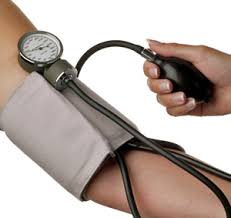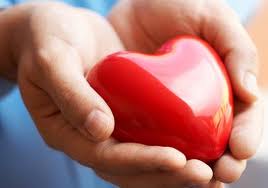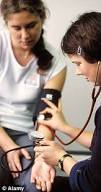




If you wouldn’t feel safe flying with the plane’s gauges pegged in the red zone. Oh, you could taxi down the runway, take off, and probably remain airborne for a spell. You might even stay up long enough to enjoy an in-flight meal. But the expectation of eventually seeing smoke billowing from the engines, or hearing shards of metal snap off, would fill you with dread.
Strange, then, that most men don’t sweat it when their body’s most important gauge—blood pressure—rises into the red zone and stays there. “High blood pressure gives you a twofold to fourfold increase in your risk of stroke or heart attack,” says Prediman K. Shah, M.D., director of cardiology at Cedars-Sinai Medical Center, in Los Angeles. “And only about one-third of individuals with high blood pressure have it under some sort of control.”
The problem is, most of us mistake the early stages of hypertension for completely normal blood pressure. In the past few years, 120/80 millimeters of mercury (mm Hg) went from being classified as healthy to “prehypertensive” by the National Heart, Lung, and Blood Institute. The target numbers are now 119/79 mm Hg or lower. To hit that target, and avoid a crash landing, let the steam out of the following “pressure cookers” one at a time.
Excess Baggage Around Your Gut
Your heart and the 60,000 miles of veins, arteries, and capillaries in your body have enough work to do when you’re lean. Don’t make matters worse by adding a beer belly, which requires more blood supply, putting additional strain on the heart and raising overall blood pressure. “It’s infrequent that people are rail thin yet have high blood pressure,” says Eric Topol, M.D., chief academic officer of Scripps Health. “By bringing your weight into line with what it should be, you can produce a 10 to 29-point drop in blood pressure,” says John Elefteriades, M.D., chief of cardiothoracic surgery at Yale. For men with borderline-high blood pressure, that alone is enough of a drop to eliminate the need for pharmaceutical intervention, he says.
Do This: Eat meat. In a recent Australian study, people with high blood pressure who replaced 8 percent of their daily calories from bread, cereal, potatoes, or pasta with lean red meat experienced a four-point drop in their systolic blood pressure in just 8 weeks. Arginine, an amino acid in red meat, may help dilate blood vessels, lowering blood pressure. Plus, limiting starches lowers blood sugar and makes your body more efficient at burning fat.
Not That: Eat a low-fat diet. Removing fat from your diet could actually work against your goal, because healthy fats are key to lowering blood pressure. For example, a study in theJournal of Medicinal Food found that men who replaced their regular cooking oil with sesame oil for 45 days experienced decreases in their blood pressure and blood sugar. Sesame oil contains polyunsaturated fatty acids and a compound called sesamin, which stops your liver from making cholesterol. Look in the ingredient list on your salad-dressing bottle for sesame oil. We like Annie’s Naturals Organic Asian Sesame Dressing, which also contains heart-healthy garlic.
Inactivity
“You can achieve up to a 10-point drop in blood pressure from regular aerobic exercise,” says Dr. Elefteriades. A solid workout raises your blood pressure, which gives your body practice in bringing it back down. Well-trained blood vessels expand and contract easily, which helps control blood pressure, even during times of heightened or prolonged stress.
Do This: Simply squeeze a rubber ball. It seems to help—a lot, actually. According to a study in the European Journal of Applied Physiology, people performing handgrip exercises for 8 weeks lowered their systolic blood pressure by 15 points and their diastolic pressure by five. “The blood-pressure response to grip training is greater than to aerobic exercise,” says lead author Maureen MacDonald, Ph.D. All it takes is 2 minutes of squeezing, four times a day.
Not That: Train like a hamster running around in a wheel. Overdosing on cardio can limit the benefits your gym session has on your blood vessels, so add resistance training to the mix. Researchers at the University of Michigan found that men who performed three total-body weight workouts a week for 2 months lowered their blood-pressure readings by an average of eight points.
The Bottle
This is a case of too much of a good thing. “Once you exceed two alcoholic beverages a day, you begin to incur complications, such as an increased risk of high blood pressure,” says Dr. Shah. No one is quite sure why an excessive amount of alcohol, which dilates blood vessels, can sometimes raise blood pressure, but it does. No need for you to become as dry as a Steven Wright punch line, though. In fact, Harvard researchers recently analyzed the drinking habits of 11,000 men with high blood pressure and determined that those who consumed two drinks a day were 30 percent less likely to have a heart attack than those who drank less.
Do This: Make it a Bloody Mary. According to a study in the American Heart Journal, the antioxidant lycopene in tomato juice can boost your beverage’s blood-pressure-lowering power. When participants in the study swallowed tomato-juice extract for 8 weeks, they experienced a 10-point drop in their systolic BP and a four-point fall in their diastolic measure. Add a stalk of celery for extra protection. High in fiber, celery has been used for centuries in Asian medicine to drop blood pressure.
Not That: Drink on an empty stomach. Keep your bar tab in check, and don’t drink any alcoholic beverage without eating something along with it. Researchers at the State University of New York at Buffalo found that a man’s risk of high blood pressure increases nearly 50 percent if he boozes between meals. Eating while you imbibe may slow you down and help limit the total amount of alcohol you ingest, the researchers say.
Salt
The white stuff causes your body to retain water, which increases blood volume and, consequently, blood pressure. The results are deadly: The more sodium you eat, the shorter your life, according to researchers at the University of Helsinki. They reviewed more than a dozen studies and found that people who reduced their sodium intake by 30 percent lived an average of 7 years longer than those whose sodium intake remained high. (The national average is over 4,000 milligrams (mg) a day–1,600 mg more than is recommended.)
Do This: Mix up a DIY salt substitute. Australian scientists determined that diluting regular salt with potassium salt and Epsom salt lowers arterial blood pressure by six points. Cooking with the concoction reduces overall sodium intake and boosts blood levels of potassium, a nutrient that naturally regulates blood pressure. Pour 65 percent table salt, 25 percent Morton Salt Substitute (potassium chloride), and 10 percent Epsom salt into a small bowl, mix well, and funnel into a saltshaker. You won’t taste the difference.
Not That: Skip the saltshaker altogether. You need some sodium in your diet to survive. (One recent study revealed that too little of the mineral can actually increase your risk of death by 37 percent.) Instead, focus on eliminating supersources of salt, such as processed foods. One frozen dinner can contain as much as 2,000 mg sodium, a cup of cottage cheese packs 918 mg, and a single slice of deli ham packs 240 mg.
Stress
There was a time when stress saved your life. Blood pressure goes up in response to tension, when your body’s fight-or-flight response causes adrenaline surges. But chronic stress, like the kind you experience every day at the office, can permanently increase your blood-pressure set point.
Do This: Clean the house. Researchers reporting in the journal Medicine & Science in Sports & Exercise equipped 28 people with BP monitors and asked each person to do housework to burn 150 calories a day. After 2 days, their BP levels fell an average of 13 points. Daily chores lower BP, and not only because of the exercise. Having a clean house may reduce psychological stress, according to the study authors.
Not That: Slack off on relaxation. “Most people don’t have acupuncture or perform relaxation techniques regularly enough for a lasting effect,” says Dr. Shah. Reduce the chances you’ll skip a de-stress session by choosing a tension reliever that’s convenient and can be scheduled in advance. One option? Make a standing weekly appointment with a masseuse near your office.
A study by researchers at the University of South Florida revealed that people who received three 10-minute massages a week experienced an 18-point drop in their systolic blood pressure and an eight-point drop in their diastolic BP.
Your Genes
Thanks to their DNA, some men can do everything right and still have high blood pressure. If your numbers are more than 20 to 30 points out of range or your blood pressure doesn’t budge with exercise and diet changes, you may need a pharmaceutical solution, says Dr. Elefteriades.
Do This: Pop more than one pill. “Many patients need additional medications to see a benefit,” says Dr. Elefteriades. In fact, a new study by researchers at Trinity College, in Dublin, reveals that people who took a low dose of four different blood-pressure drugs watched their readings drop 19 points. The combination, which included a calcium channel blocker, a beta-blocker, a diuretic, and an ACE inhibitor, outperformed each of the drugs on its own by as many as 10 points.
Not That: Pop painkillers for headaches. Lay off acetaminophen, ibuprofen, and other over-the-counter pain relievers if you have high blood pressure in your genes. A study published in the Archives of Internal Medicine found that men who regularly take painkillers have a 38 percent higher risk of developing high blood pressure.
Off-The-Cuff Advice
An inaccurate blood-pressure reading can cause more trouble than no reading at all–and everything from your shirtsleeve to your last meal to how you sit can skew the score. Follow these tips for a true measure.
Shed your outer layers. Nurses and doctors don’t always ask you to take off your shirt before measuring your blood pressure, but wearing a sweatshirt or bulky sweater could lead to an artificially raised reading. Thick sleeves boosted systolic pressure measurements by as much as 22 millimeters of mercury (mm Hg) in men with high blood pressure in a Tel Aviv University study. Dress shirts and thin sweaters are fine; a study in the journal Blood Pressure revealed that measurements taken over bare skin were the same as those taken through sleeves less than 2 mm thick.
Elevate your arm to heart level. The blood-pressure guidelines set forth by the National Heart, Lung, and Blood Institute are based on measurements taken from people holding their arms at heart level. Most doctors and nurses slap the cuff on your arm when it’s resting on a desk or chair, which can raise both diastolic and systolic pressure by six to nine points, according to a study by Dutch researchers.
Sit for 16. In a study published in the American Journal of Hypertension, researchers discovered that patients who sat for 16 minutes before having their blood pressure checked received more accurate readings than those who sat for less time. When you stand or move around, your blood vessels constrict, and the longer you sit, the more time they have to return to normal size, lowering blood pressure.
Hit the men’s room. Holding back your bladder can artificially raise your blood-pressure reading by making your nervous system think you’re stressed.
Avoid finger cuffs. All our experts panned finger cuffs. “The closer to your trunk, the more accurate monitors become,” says John Elefteriades, M.D., chief of cardiothoracic surgery at Yale. Finger cuffs are also susceptible to shifts in body temperature and finger position.
